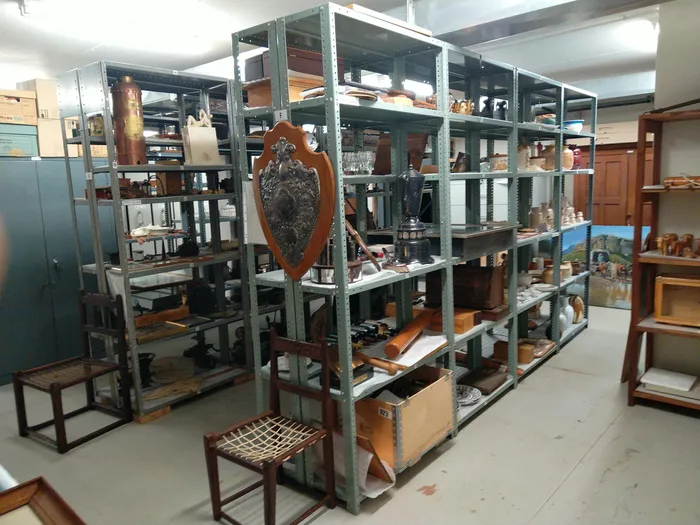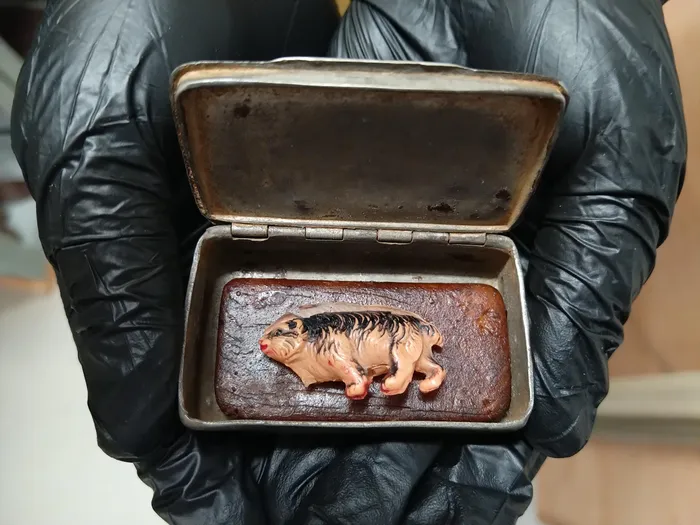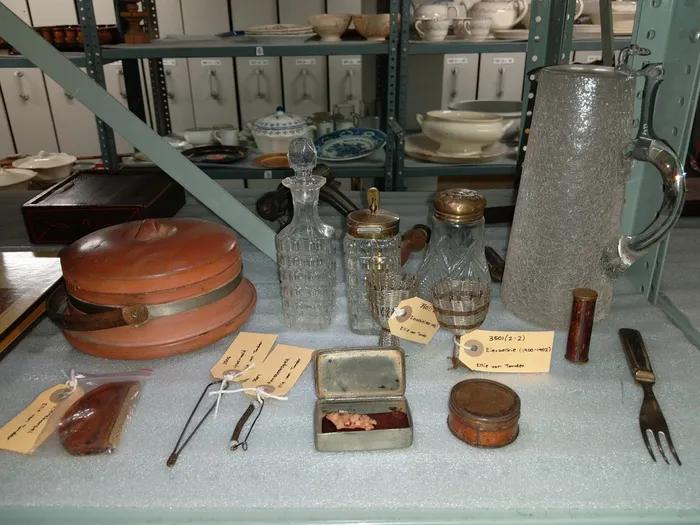Small pig, big story of hope: A tangible link to the past

A small, misshapen rubber pig donated to the Erfenisstigting at the Voortrekker Monument has become a powerful symbol of hope and endurance. Once belonging to a woman imprisoned in a Boer War concentration camp, the toy and other personal items tell a moving story of faith, resilience, and the enduring spirit of the Afrikaner people. The Erfenisstigting houses more than 4,000 valuable items that are preserved under climate-controlled conditions.
Image: Du Preez de Villiers
In a world often overwhelmed by decay and daily struggles, it’s easy to forget the deep-seated stories of faith and perseverance woven into the Afrikaner DNA. That’s how Dawid Brand, Head of Media, Marketing, and Tourism at the Kultuurtuiste, frames the significance of an unusual donation to the Erfenisstigting (ES) at the Voortrekker Monument.
On an ordinary day, a woman arrived at the Heritage Foundation with a small, unassuming object that seemed to stop time: a tiny rubber pig, yellowed with age but rich with meaning.
“This simple toy, once in the hands of a woman in a concentration camp, speaks volumes,” Brand explains. “It asks: What is abundance without gratitude? What is freedom without thankfulness?”
A Hidden Heritage
The toy is part of a collection recently donated to the ES by Ellie van Tonder. These items belonged to Van Tonder’s grandmother, Ouma Steyn of Reddersburg, who endured unimaginable hardship during the Anglo-Boer War (1899–1902).
“During the British scorched-earth policy, when homes and farms were burned and crops destroyed, she had to bury her household belongings,” says Monique Lubbe, ES curator. “A wine goblet, butter dish, glass salt, and mustard and vinegar containers, all simple kitchenware, were hidden underground. They represented home, food on the table, and peace in the heart.”
Lizette Jansen, manager of the ES, reflects, “When you bury something that symbolises home, you bury a part of yourself.”
Ouma Steyn was later sent with thousands of other women and children to a concentration camp. While the exact location remains unknown, some of her personal items survived: a fork, a needle case, a clothes brush, a crochet needle, a safety pin, and a snuffbox are preserved at the ES, alongside two wire egg cups she crafted herself.
Hope in Small Things
Among the donated items is a pewter container holding a small piece of Boer soap and the misshapen rubber pig. “This is what Ouma Steyn played with in the camp,” Van Tonder recalls with a gentle smile. “This little pig was her hope.”

This small rubber pig on top of a piece of Boer soap in a pewter container captures the imagination
Image: Du Preez de Villiers
Jansen adds, “In a society that often values grand gestures, the symbolism of something as small as a concentration camp toy reminds us that childhood and play were priceless luxuries. Yet, even in such conditions, they provided the strength to endure.”
Brand believes the small rubber pig carries a powerful lesson for today. “Hope isn’t always found in grand monuments or major acts. Sometimes, it fits inside a tiny pewter container: a testament to a woman’s faith, a child’s dreams, and a people’s ability to find light amid loss.”
Preserving Everyday Heroism
The ES houses more than 4,000 significant items, including paintings, weapons, awards, sculptures, clothing, and everyday objects. “Every household has something, a photo, a letter, an item that is part of our collective memory,” Brand says. “If we don’t record these stories, we lose not just history but identity.”

The variety of items that Ouma Steyn buried, took with her to the concentration camp, or made herself.
Image: Du Preez de Villiers
Jansen emphasises that gifts like these embody the foundation’s mission: “We do more than preserve historical objects. We create a legacy space where stories of ordinary people who performed extraordinary acts of courage and humanity are collected, restored, and digitally documented.”
Thanks to donations like Ouma Steyn’s belongings, exhibitions and projects allow the public to experience history not just in books, but through the texture of a clothes brush, the shine of a tin cup, or the cracks in a tiny toy pig.
For inquiries about donations, contact Monique Lubbe at monique@kultuurtuiste.org.za